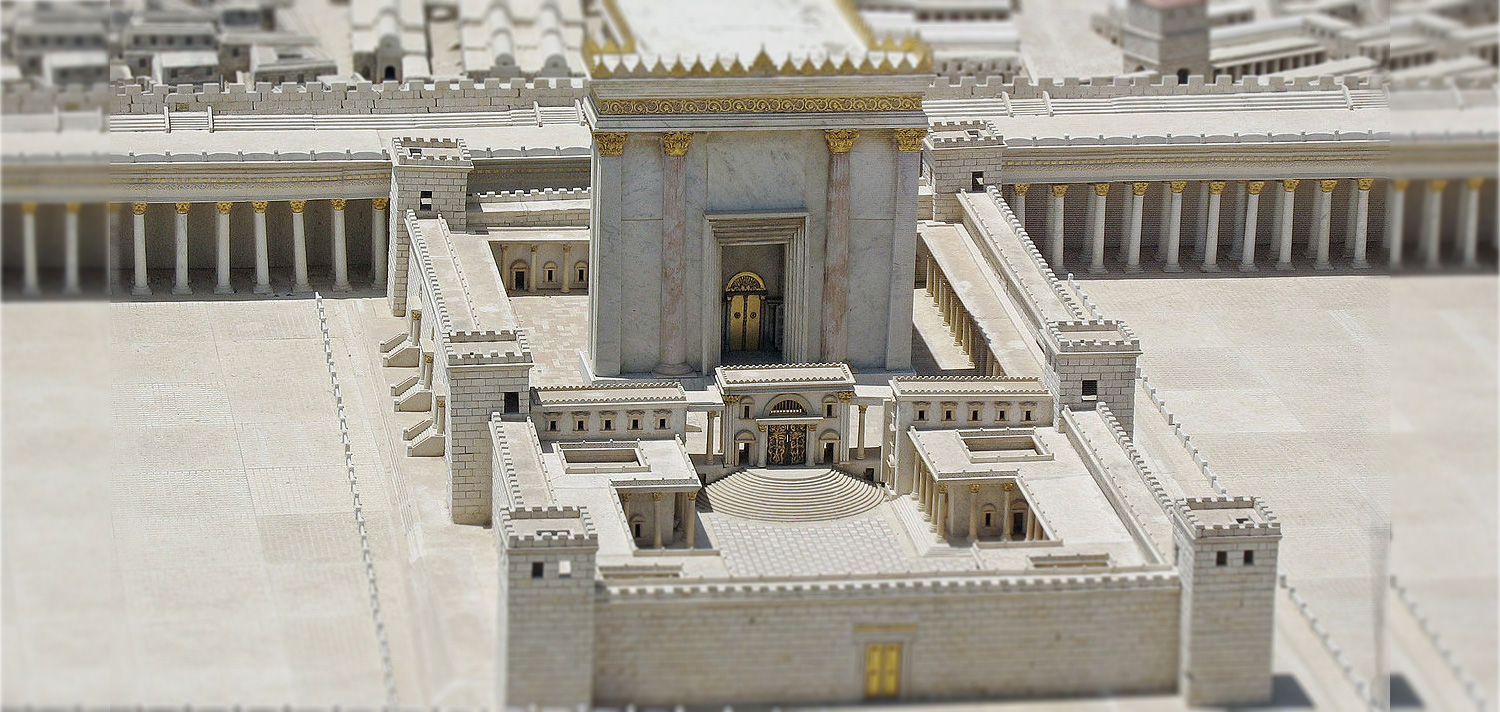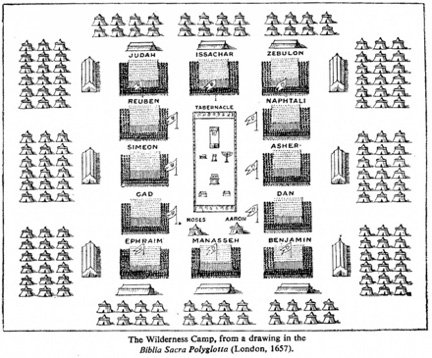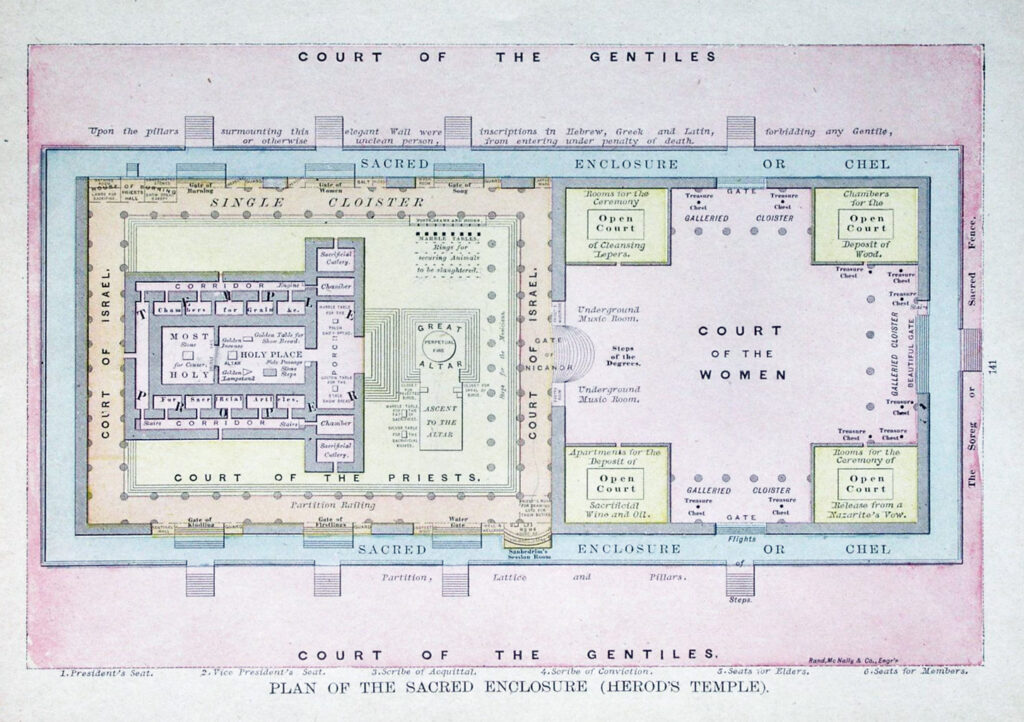
The Temple & the Presence of God
There is an interesting issue regarding the future rebuilding of the Temple and Torahism, and it has to do with God’s presence. In the Torah, there was a proximal aspect to holiness. The closer the Israelites were to the presence of God, the closer they were to His shalom, His blessing, His face. Conversely, the further they were from His presence, the closer they were to the place of the curse.
In the beginning, of course, humanity enjoyed direct access to God. That is what He created us for. Adam and Eve walked in the Garden with Him. But when they disobeyed God and sinned, they were cast out of the Garden (Gen 3:23-24), out of His immediate presence. Later, through Abraham’s family and the giving of the Law of Moses on Mount Sinai, God began restoring our access to His presence. It started with the Tabernacle. Exodus 25:8 says, “Then have them make a sanctuary for me, and I will dwell among them” Under the Law of Moses, God’s presence was in the Tabernacle as He would “tabernacle” or camp with His people.
But access to His presence was highly-regulated; people didn’t just wander haphazardly into it. The Torah instructed the Israelites on how to set up their camp. The Tabernacle was to be placed in the center with the twelve tribes organized around it in such a way that they each had equal access to it:

Notice the sense of hierarchy in this arrangement, with holiness radiating out from the Tabernacle in the center. If you were outside the camp altogether, you were in the Unholy Place, so to speak. Once you entered the camp, there would be greater holiness. As you crossed into the outer courtyard of the Tabernacle in the center of camp, the holiness increased. Stepping inside the Tabernacle itself brought more holiness; only priests were allowed in there. And finally, inside the Tabernacle was a room called the Most Holy Place where only one person in all of Israel, the High Priest, was allowed inside, just once a year. In Exodus, God commands the Israelites to make a veil of blue, purple, and crimson fabrics and fine linen (Exodus 26:31) for the Tabernacle. And then He says:
“And you shall hang the veil from the clasps, and bring the ark of the testimony in there within the veil. And the veil shall separate for you the Holy Place from the Most Holy.”
Exodus 26:33
This whole system kept believers at a distance. The hierarchy of holiness sent a clear message to Israel that the direct access we once had to God’s presence in the Garden was not yet restored. The Tabernacle, of course, was a temporary tent that the Israelites carried with them in the desert. Later it became a permanent Temple built in Jerusalem, which was built on the same blueprint and contained the same hierarchy of access:

Around the outside was the outer court of the Gentiles, who were not allowed any further inside. Then, within the sacred enclosure, there was the court of the women. Next, as you moved closer to God’s presence, came the Court of Israel, where only male Jews were allowed. Closer still was the Court of the Priests, where only male Jews from the tribe of Levi (who were priests) could enter. Then there was the Holy Place, where Temple ceremonies were performed by the priests. And finally, in the center, was the Holy of Holies or Most Holy Place where only High Priest was allowed once per year.
Given this system, it’s easy to understand why it would have been unthinkable for a Jew under the Law of Moses to consider approaching God’s throne of grace with confidence and freedom. Not even the high priest did that! And then something incredible happened, something both earth-shaking and world-changing. As Yeshua hung on the cross, Mark tells us:
And Jesus uttered a loud cry and breathed his last. And the curtain of the temple was torn in two, from top to bottom. And when the centurion, who stood facing him, saw that in this way he breathed his last, he said, “Truly this man was the Son of God!”
Mark 15:37-39
At the death of Yeshua, the hierarchy of exclusivity prescribed in the Torah was literally torn down. The “veil of blue and purple and crimson fabrics and fine linen” prescribed by the Law of Moses was destroyed at the death of the Messiah. And it was God Himself who destroyed it. Under the New Covenant ushered in by Yeshua, we now have direct access to God. Hebrews 4:16 says, “Let us then with confidence draw near to the throne of grace, that we may receive mercy and find grace to help in time of need.” (This same idea is found elsewhere in the New Testament, including Ephesians 3:12 and 1 John 5:14.)
Consider the Temple’s physical layout above—with its hierarchy of access for gentiles, women, and Jews—as you read the verse below. Imagine how this would have sounded to Paul’s fellow Jews at the time he wrote it:
“There is neither Jew nor Gentile, there is neither slave nor free, there is no male and female, for you are all one in Christ Jesus.”
Galatians 3:28
Yeshua’s sacrifice removed the boundary established by the Law of Moses and restored our direct access to the presence of God. And then, around 40 years after the Resurrection, God allowed His Temple to be destroyed. To this day, it has never been rebuilt.
The Big Picture
It’s important to keep the big picture in mind when considering whether or not the prophecies about the rebuilding of the Temple are to be taken literally. Consider the unfolding story of God’s presence with His people throughout history. He first created humans, and we lived with Him in the Garden. But we messed up and disobeyed God, causing our banishment from His immediate presence. In His divine mercy, God initiated a process for reconciling us to His presence. First in a limited way through the Tabernacle under the Law of Moses, which eventually became the Temple in Jerusalem. And ultimately through Yeshua, our Messiah, who came and restored our direct access to God.
In Scripture, the tabernacle and the Temple are symbols of God’s presence with His people. The New Testament tells us that we believers in Yeshua are now the Temple in which God dwells (1 Cor. 3:16-17; 2 Cor 6:16; Eph 2:19-22; 1 Pet 2:4-5). It’s essential to keep the entire scope of Scripture in mind as we consider the purpose a future physical Temple might serve in the Final Age. This includes the words of the apostle John who wrote the following about his vision of the New Jerusalem, “And I saw no temple in the city, for its temple is the Lord God the Almighty and the Lamb” (Rev 21:22).
In the passage below, notice the ways the author weaves in the idea of temple ceremonies and proximity to God’s presence as he explains what the work of Yeshua has accomplished. The words below in bold are phrases our modern ears tend to breeze past. But they would have resonated with the original Jewish readers as clear references to the Temple and its ceremonies:
Therefore, brothers and sisters, since we have confidence to enter the Most Holy Place by the blood of Jesus, by a new and living way opened for us through the curtain, that is, his body, and since we have a great priest over the house of God, let us draw near to God with a sincere heart and with the full assurance that faith brings, having our hearts sprinkled to cleanse us from a guilty conscience and having our bodies washed with pure water.
Hebrews 10:19-22, emphasis added
In Conclusion
The thing that Torahism (e.g., the Hebrew Roots Movement and other return-to-Torah organizations) gets right is that the Gospel is a Jewish story. It always has been. Christianity was not a new idea that popped up in the first century. It is the continuation of God’s story that started in Genesis 1:1. Yeshua was God’s plan since the beginning.
What Torahism gets wrong is the role that the Law of Moses plays in His story. The Law was given to the nation of Israel as the terms of the Sinai Covenant, a covenant which would eventually be replaced by the New Covenant promised in Jeremiah 31:31-34, which God said would “not be like the old covenant.” And “In speaking of a new covenant, he [God] makes the first one obsolete. And what is becoming obsolete and growing old is ready to vanish away.” Heb 8:13.
Shalom.
